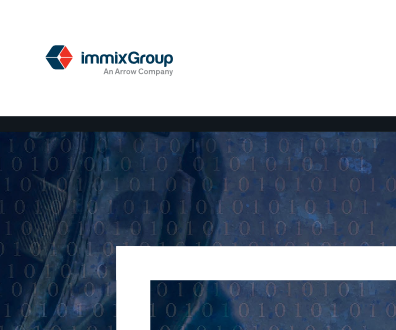sponsor content What's this?

The Rise to Prominence of Mission Integrators
Opening doors to future mission solutions with open source and open minds.
Presented by
SAIC

Defense decision-makers face a myriad of global and national security challenges that consume a majority of the Department of Defense’s available attention and budget. Additional pressures come when emerging crises require the immediate redirection of precious time and resources and a readjustment of priorities.
This constant tension between strategic planning and emergency response reinforces the imperative need for closer government and industry cooperation to field current and emerging technology into mission-oriented solutions. Fusing that into existing and developed military hardware and software requires world-class, mission-focused integrators and innovators.
Speed, efficiency and efficacy when integrating technologies to match the mission are outcomes of detailed evaluation, deliberate planning, forethought and ruthless dedication to open architectures. That’s where mission integrators thrive. For example:
- The Air Force’s Air Education and Training Command faces challenges in budget, skills shortages and even the scourge of geography – trainers and students are not always in the same time zone let alone the same air base. Expected to train more than 30,000 U.S. and allied students annually, the command can’t afford the time or money needed to generate bespoke solutions for each challenge. Leaning on industry integrators, the command has stood up several cutting-edge training tools that rely on commercially available technologies blended with mission-wise rigor and insight. For instance, Project Luminex leverages a wrap-around screen that was initially developed for the entertainment industry and integrates pilot training software to create an effective and affordable training experience.
- A growing number of our key allies and partners have access to advanced, fifth-generation weapon systems, notably the F-35. What they are lacking is a functional, accessible and affordable way to train together in an advanced, synthetic battlespace. Real-world events in Europe have made this especially acute, with a growing need in the Pacific. At the USAFE-AFAFRICA Warfare Center, SAIC has successfully integrated the F-35 Joint Program Office’s FENIX (F-35 Emulated Non-OFP Interoperability Xperience) simulation software with low-cost, lightweight cockpit emulator hardware. SAIC couples this simulator solution with partner-accessible networks and a skilled force to produce a realistic training and mission rehearsal environment that effectively integrates allies together. The solution is not only an order of magnitude cheaper than any of the alternatives, but it is the only effective training option for many of our allies.
- The Department of the Air Force’s Learning Services Architecture and the U.S. Coast Guard’s Online World of Learning together serve nearly 1 million users. The architectures host the myTraining and MyLearning applications, including the on-the-job training records for every enlisted member of the Air Force.
Collectively across government and industry, let’s solve the end-to-end problem with the best of what the full technology ecosystem can bring. That may mean using open systems and open source to scale quickly. It may mean modernizing in place rather than replacing. It may mean working well with others, but that is a strength of the U.S. We never go to war alone; we always go with allies, and we can leverage that mindset in integrating the best for the best.
Rather than isolating your solution on a proprietary island, consider the value of an open architecture to work with mission integrators to implement new technologies that can continuously build up efficiencies. You get to retain control over your hardware and software and move fast while doing it.
Learn more about the Mission IT solutions SAIC partners with government and industry to provide in support of critical global and national security missions.
By: Vincent DiFronzo, Executive VP, Air Force and Combatant Commands at SAIC
__________________________________________________________________________________________________
This content is made possible by our sponsor SAIC; it is not written by and does not necessarily reflect the views of GovExec's editorial staff.
NEXT STORY: 4 Questions About the Future of Space






